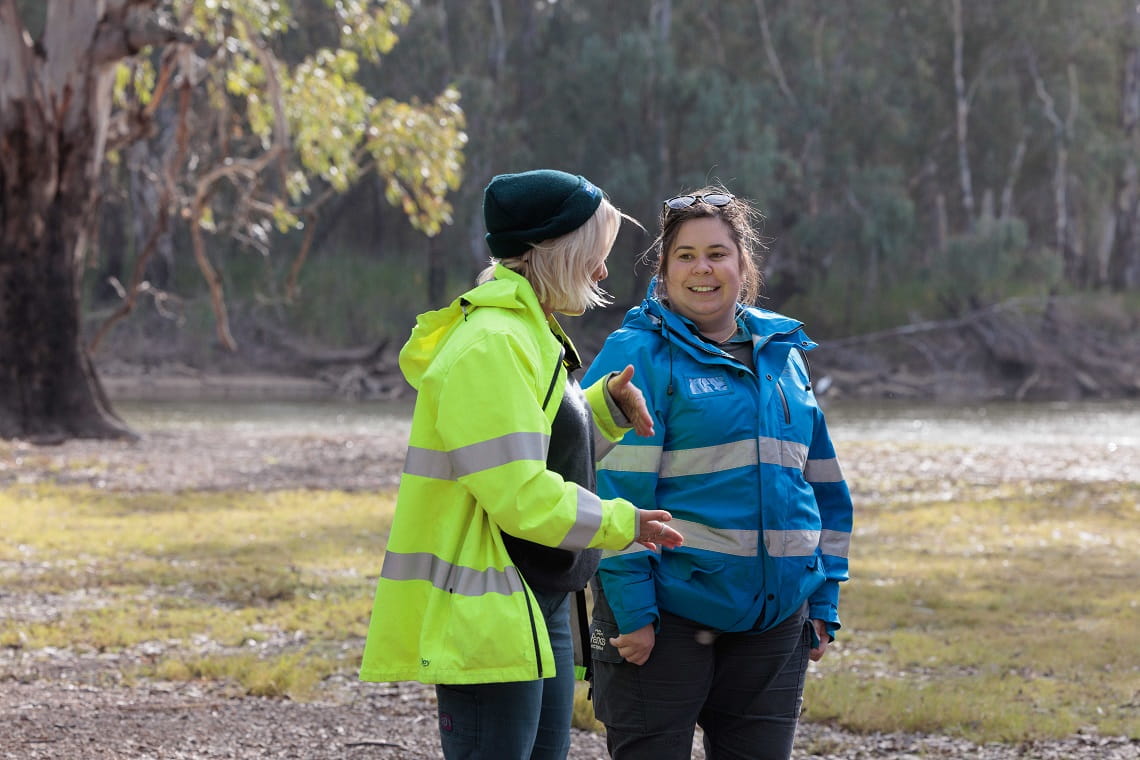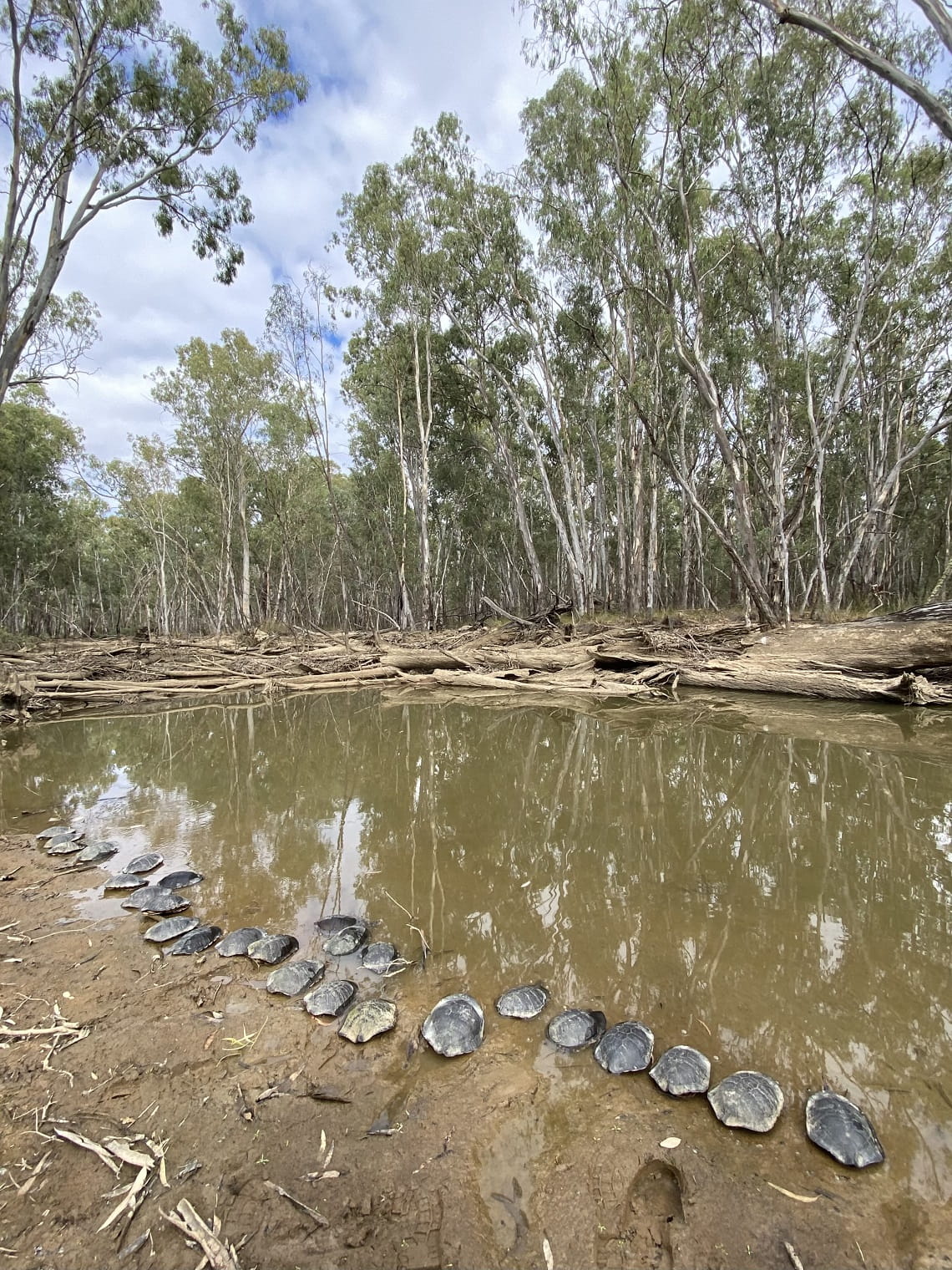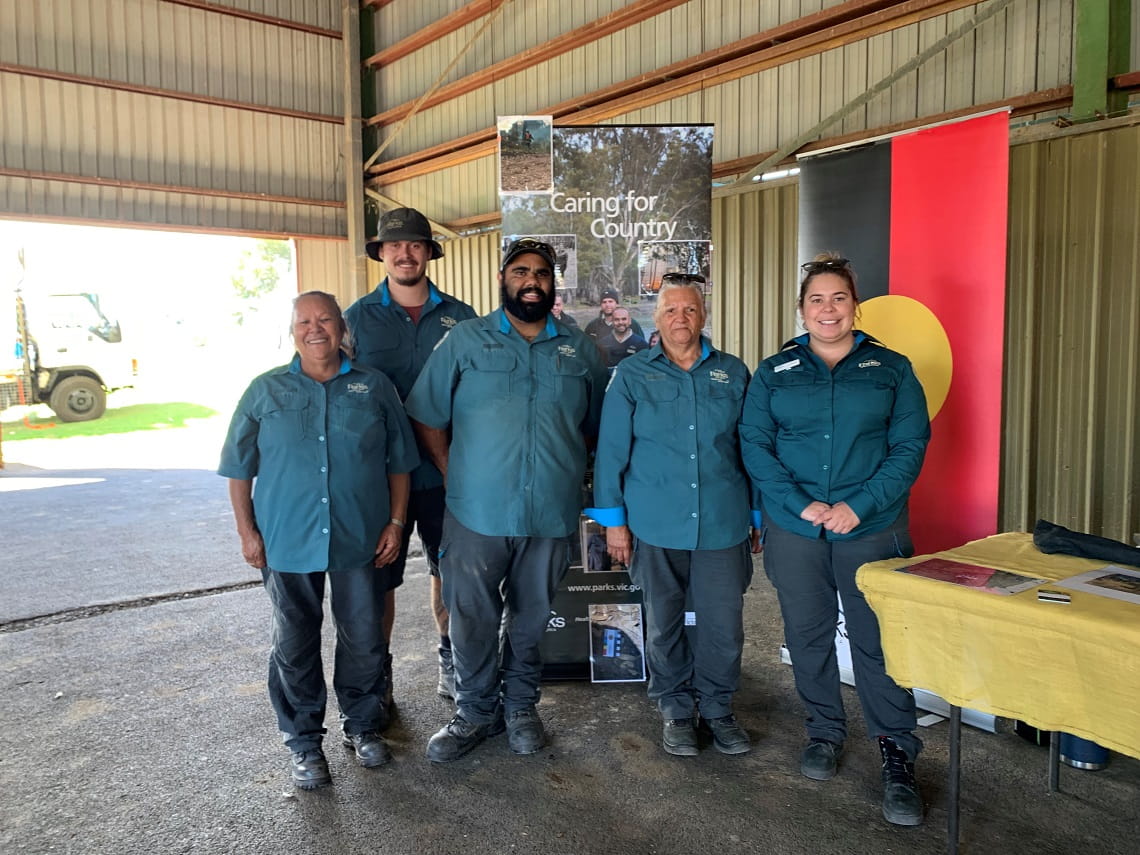Bonnie Joachim’s love of caring for her Country was nurtured as a little girl when she would often accompany her father to work in the Barmah National Park.
She credits time spent in the park with her dad as inspiration for her work as a Yorta Yorta ranger.
“My dad always said you never stop learning. He would always take us out and teach us about turtle movements and our totem.”

Bonnie Joachim, Yorta Yorta ranger (right) in Barmah National Park with Steph Carter, Culture and Heritage ranger (left). Credit Parks Victoria
One of the first projects initiated by the Yorta Yorta Nation when they secured joint management of Barmah National Park in 2010, was the conservation of the culturally significant freshwater turtles in Barmah–Millewa Forest.
More than a decade later, Bonnie is continuing in her father’s footsteps, working with Katie Howard from the Arthur Rylah Institute for Environmental Research (DEECA), to manage the health of freshwater turtle populations. Katie Howard worked on the first turtle research project initiated by Bonnie’s dad.

“The Broad-shelled Turtle is a totem animal of the Yorta Yorta People and plays an important role in our creation stories. Our people have given it the special name, ‘Bayadherra,’ because of its role as our provider, guide, and protector,” Bonnie says.
“The two other turtles, the Murray River Turtle, and the Common Long-necked turtle are also culturally significant as a food source. When the Yorta Yorta peoples totem, plants and animals are plentiful on our land and in our waters, it’s a sign that our Country is healthy.”
Bonnie joined Parks Victoria as a seasonal ranger in 2020 and soon after became part of the Yorta Yorta ranger team.

Bonnie is part of the Yorta Yorta Ranger team who use cultural knowledge, developed over many thousands of years, to improve and restore Country and educate the community
L-R Hilda Stewart, Tyler Ferguson, Richard Beckhurst, Greta Morgan and Bonnie Joachim.
In addition to the turtle monitoring project, Bonnie is committed to sharing her knowledge and educating visitors and young people about Yorta Yorta Country.
Bonnie loves working alongside other Yorta Yorta rangers, particularly two senior women who she calls the Aunts. Greta Morgan and Hilda Stewart have decades of experience as Parks Victoria Interpretation, Information and Education Officers.
Along with Bonnie, they deliver education programs to schools Bush Kinder and the Junior Ranger school holiday program.

Sharing knowledge: Yorta Yorta women Bonnie Joachim, Hilda Stewart and Greta Morgan are committed to educating the next generation about the beauty of Caring for Country
“We’ve done fishing and minibeasts where you collect little creatures in the water, like gnats, and bird watching to name a few. We also have a Connection to Country activity where we talk about our Country. All of Yorta Yorta Country.”
“If we run one activity, they (Junior Rangers and their families) seem to come to all the other activities, and I do that with the Aunts – Aunty Hilda and Aunty Greta. It’s really good that the three of us all get to do that together and learn off each other. I’ve learned so much from them,” Bonnie said.
Bonnie developed educational resource, The Turtles of Yorta Yorta Country for the Junior Ranger program. She is working with the Yorta Yorta Nation Aboriginal Corporation (YYNAC) to develop a Connection to Country Yorta Yorta book which will be shared with thousands of school students and families.
Barmah National Park and the adjacent Murray Valley National Park in New South Wales protect the largest River Red Gum Forest in Australia. The park is jointly managed by the Yorta Yorta Nation Aboriginal Corporation and Parks Victoria.
It is an exceptionally diverse environment with records of more than 420 indigenous plant species and more than 300 native animal species. In addition to animals such as kangaroos and emus (which are abundant within the park and in the region) the National Park is a particularly important habitat and refuge for wetland-dependent birds, native fish and aquatic mammals, frogs and reptiles.







